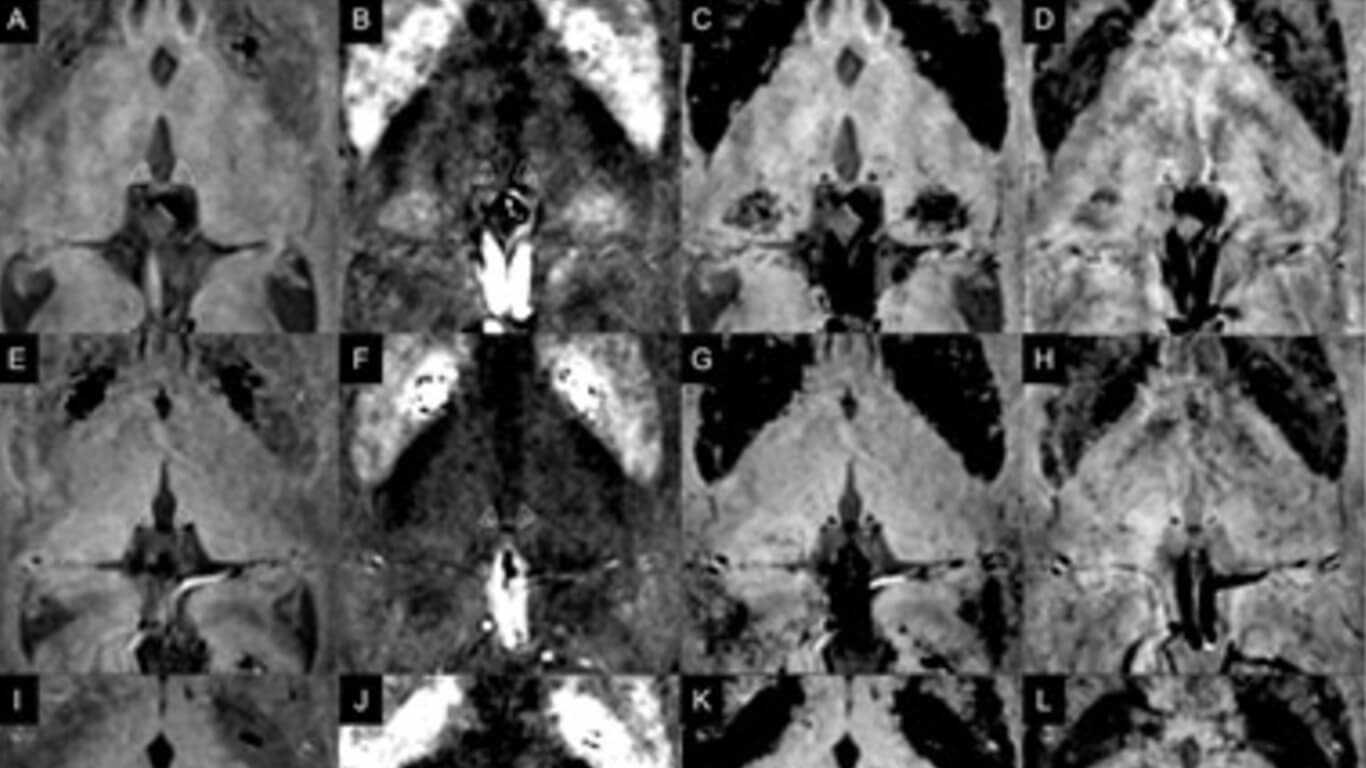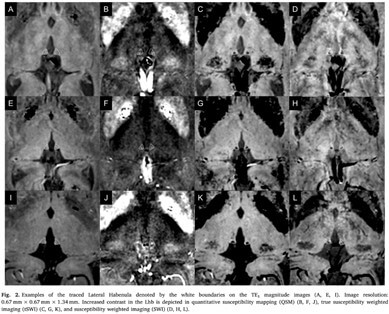
Visualizing the lateral habenula using susceptibility weighted imaging and quantitative susceptibility mapping
By: Karen Holzberger, President & CEO of SpinTech MRI
Author(s): Naying Hea,1 , Sean K. Sethib,c,e,1 , Chencheng Zhangd , Yan Lia , Yongsheng Chenf , Bomin Sund , Fuhua Yana,⁎ , E. Mark Haackea,b,c,e
Journal: Magnetic Resonance Imaging
Published: 2020
Read Full Paper: https://www.sciencedirect.com/science/article/abs/pii/S0730725X19303364?via%3Dihub
Abstract

The habenulae consist of a pair of small nuclei which bridge the limbic forebrain and midbrain monoaminergic centers. They are implicated in major depressive disorders due to abnormal phasic response when provoked by a conditioned stimulus. The lateral habenula (Lhb) is believed to be involved in dopamine metabolism and is now a target for deep brain stimulation, a treatment which has shown promising anti-depression effects.
Method
We imaged the habenulae with susceptibility weighted imaging (SWI) and quantitative susceptibility mapping (QSM) in order to localize the lateral habenula. Fifty-six healthy controls were recruited for this study. For the quantitative assessment, we traced the structure to compute volume from magnitude images and mean susceptibility bilaterally for the habenula on QSM. Thresholding methods were used to delineate the Lhb habenula on QSM. SWI, true SWI (tSWI), and QSM data were subjectively reviewed for increased Lhb contrast.
Results
SWI, QSM, and tSWI showed bilateral signal changes in the posterior location of the habenulae relative to the anterior location, which may indicate increased putative iron content within the Lhb. This signal behavior was shown in 41/44 (93%) subjects.
Conclusions
In summary, it is possible to localize the lateral component of the habenula using SWI and QSM at 3 T.

